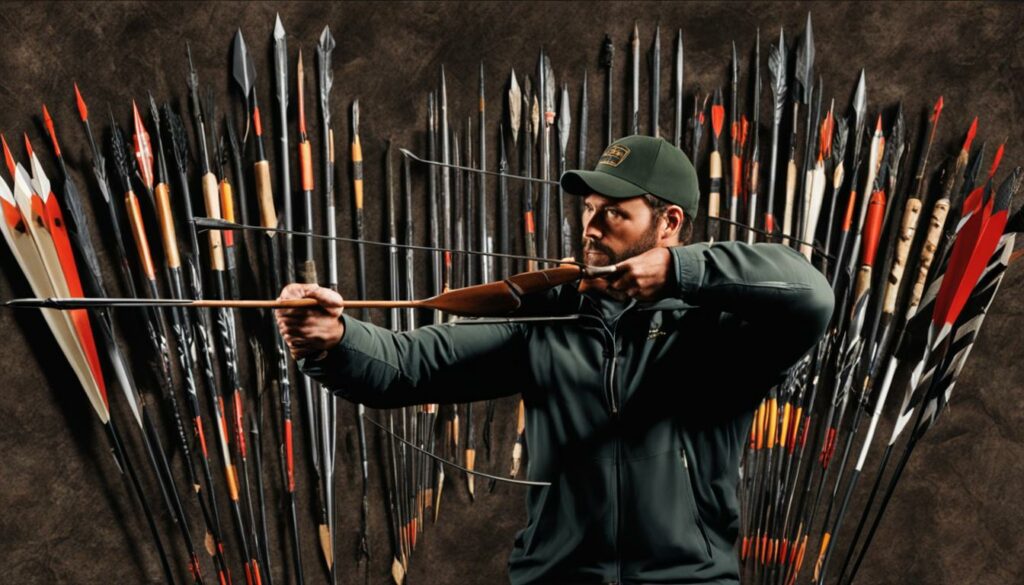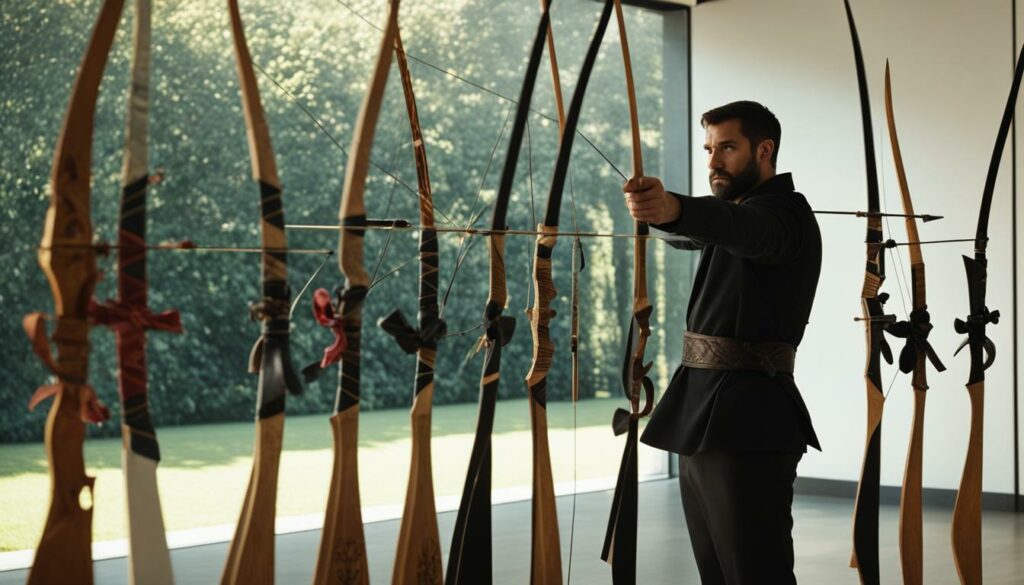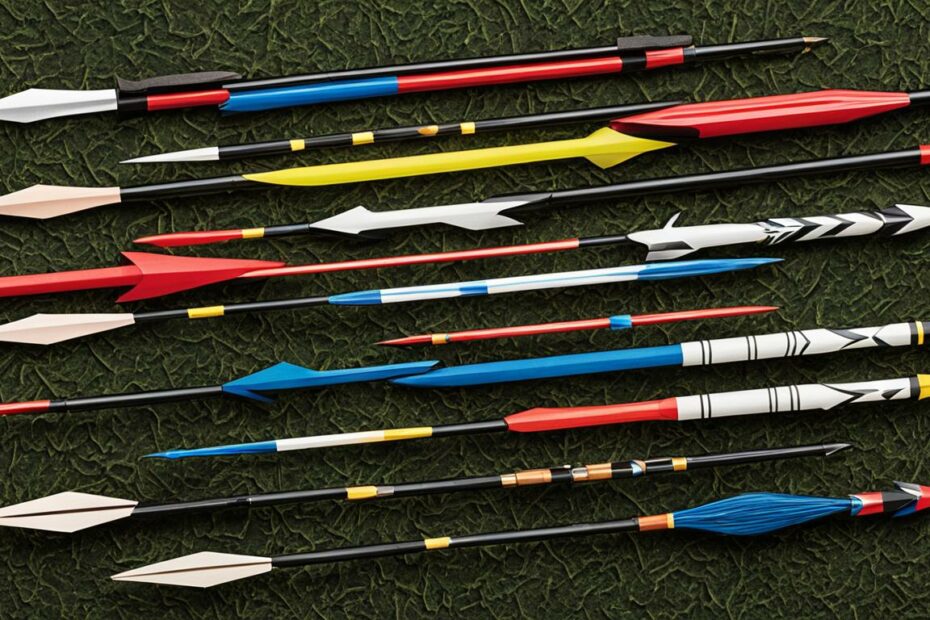Arrows are essential tools in archery, hunting, and cultural symbolism. There are various types and specific applications, and understanding the different types of arrows and their uses is crucial for archers and hunters.
This article will explore arrow classifications, functions, and applications, from organic chemistry to choosing arrows for hunting.
Arrows come in a wide variety, each designed for a specific purpose. Whether you’re an archery enthusiast, a hunter, or simply curious about the different arrow types, this article will provide valuable insights.
In the following sections, we will explore the arrows used in organic chemistry, discuss the factors to consider when choosing arrows for hunting and examine the different types of bows used in archery.
Additionally, we’ll touch upon the essential archery gear needed to engage fully in this captivating sport. Discover the fascinating world of arrows and uncover their diverse functions and applications.
The Types of Arrows in Organic Chemistry
In organic chemistry, arrows play a crucial role in representing different reactions and mechanisms. There are eight types of arrows commonly used in this field:
- Reaction Arrow: It indicates the direction of a chemical reaction and shows the starting and ending compounds.
- Equilibrium Arrow: This arrow represents reversible reactions, indicating that the reaction can proceed in both directions.
- Resonance Arrow: Resonance arrows show how electrons are delocalized in a molecule, indicating overlapping pi orbitals.
- Dashed Arrow: Dashed arrows represent the movement of an electron pair or a radical in a reaction mechanism.
- Curved Arrow (Double-headed): Double-headed curved arrows represent the movement of two electron pairs, typically in concerted reactions.
- Curved Arrow (Single-headed): Single-headed curved arrows show the shift of a single electron pair during a reaction.
- Broken Arrow: Broken arrows illustrate the breaking or cleavage of a bond in a reaction.
- Retrosynthesis Arrow: This arrow is used in retrosynthetic analysis to depict a hypothetical reaction sequence starting from a target molecule and returning to the precursor compounds.
| Arrow Type | Function |
|---|---|
| Reaction Arrow | Indicates the direction of a chemical reaction |
| Equilibrium Arrow | Represents reversible reactions |
| Resonance Arrow | Illustrates delocalization of electrons in molecules |
| Dashed Arrow | Shows the movement of an electron pair or a radical |
| Curved Arrow (Double-headed) | Represents the movement of two electron pairs |
| Curved Arrow (Single-headed) | Indicates the shift of a single electron pair |
| Broken Arrow | Illustrates the breaking or cleavage of a bond |
| Retrosynthesis Arrow | Used in retrosynthetic analysis for hypothetical reaction sequences |
Choosing Arrows for Hunting
The type of arrow, arrow length, arrow spine, personal bow preference, and the targeted gameplay all play significant roles in making the right choice.
The type of arrow is an essential consideration. Different arrow materials and constructions offer unique benefits and characteristics.
One popular choice for hunting arrows is carbon fiber constructs. Carbon arrows are lightweight, durable, and provide excellent speed and accuracy.
Arrow length is another crucial factor to consider. The appropriate arrow length will depend on an individual’s draw length and shooting style. Choosing an arrow length that provides comfort and sufficient clearance for the bowstring during the shot is essential.
The arrow spine refers to the stiffness of the arrow shaft. Selecting an arrow with the appropriate spine is essential to ensure optimal flexion upon release. The spine should match the bow’s draw weight and the specific shooting conditions.
Personal bow preference also influences arrow selection. Different bows may have specific requirements or recommendations regarding arrow type and specifications. To determine the best arrows for a particular bow, it is essential to consult the manufacturer’s guidelines or seek advice from experienced archers.
Lastly, considering the game being hunted is crucial when choosing arrows. Different game species have varying requirements regarding arrow penetration, kinetic energy, and accuracy. Selecting arrows that match the specific game being pursued is vital to ensure ethical and effective hunting.

| Factor to Consider | Description |
|---|---|
| Type of Arrow | Carbon fiber constructs offer lightweight, durable options |
| Arrow Length | Should be based on comfort and clearance |
| Arrow Spine | Ensures proper flexion upon release |
| Personal Bow Preference | Consult manufacturer’s guidelines or seek advice from experienced archers |
| Game of Choice | Select arrows that match the specific game species |
Exploring Different Types of Bows in Archery
Archery offers a range of bow types to suit different shooting preferences. Whether you are a recreational archer or a competitive marksman, there is a bow that will align with your skill level and shooting style.
Recurve Bows
Recurve bows are a popular choice among archers for their simplicity and versatility. They feature curved limbs that provide increased shooting power and accuracy.
One of the most well-known types of recurve bows is the Olympic recurve bow, which is used in international competitions. These bows require precision marksmanship and consistent technique to excel in archery.
Compound Bows
Compound bows are among the most advanced and modern bows available. They are designed with a system of pulleys and cables that provide a mechanical advantage, making them easier to draw and hold at full draw. This feature offers enhanced accuracy and stability, making compound bows the preferred choice for precision marksmen.
Traditional Bows
Traditional bows, also known as “stick” or “long” bows, have a timeless appeal. They are classic archery equipment featuring a simple design and authentic craftsmanship.
Traditional archery is a beloved form of barebow archery, which focuses on shooting without aids such as sights or gadgets. Many archers appreciate the challenge of traditional bows and their connection to archery’s roots.

| Type of Bow | Features | Advantages |
|---|---|---|
| Recurve Bows | Curved limbs for increased power and accuracy | Versatile for different shooting styles and disciplines |
| Compound Bows | Mechanical advantage for easier draw and enhanced stability | High accuracy and precision |
| Traditional Bows | Simple design for an authentic archery experience | Connection to archery’s rich history |
Essential Archery Gear
Having the right gear is essential to fully engaging in archery. Alongside a quality bow, there are other important pieces of archery equipment that every archer should consider.
Arrows are a crucial component of archery gear. They come in various materials and designs, allowing archers to choose the best option based on their shooting style and preference.
Arrows can be tailored to meet different needs and provide optimal performance from aluminum to carbon fiber constructions.
Release aids, in addition to arrows, play a significant role in archery. These devices help archers achieve consistent and accurate shots by providing a controlled bowstring release. For improved aiming and precision, sights assist archers in aligning their shots.
Furthermore, the type of bow you choose is important in archery. Different bows, such as recurve, compound, and traditional bows, offer unique shooting experiences and cater to various shooting preferences. Whether you prefer the Olympic recurve challenge or barebow archery’s simplicity, a bow is suitable for everyone.
Lastly, finding suitable shooting locations is crucial for practicing and enjoying the sport of archery. Whether it’s a dedicated archery range or a safe outdoor area with proper backstops, choosing the right shooting location ensures a safe and enjoyable experience for archers of all skill levels.
FAQ
What are the different types of arrows used in organic chemistry?
The different types of arrows used in organic chemistry include the reaction, equilibrium, resonance, dashed, curved arrow (double-headed and single-headed), broken, and retrosynthesis arrows.
Each arrow serves a specific purpose in illustrating electron movement or describing hypothetical reactions.
What factors should be considered when choosing arrows for hunting?
When choosing arrows for hunting, factors such as the type of arrow, arrow length, arrow spine, personal bow preference, and the targeted game should be considered.
Different arrows, such as carbon fiber constructs, may be used for compound bows. Arrow length should be determined based on comfort and clearance, while the arrow spine ensures proper flexion. Personal bow preference and the game being hunted further influence arrow selection.
What are the different types of bows in archery?
Archery uses different bows, including recurve bows (such as Olympic recurve bows), compound bows, traditional bows, and barebow bows.
Recurve bows provide a challenging discipline for recreational and competitive archers, while compound bows offer incredible accuracy and are favored by precision sharpshooters.
Traditional bows provide a timeless and fun shooting experience, and barebow archery focuses on shooting traditional bows without sights or gadgets.
What is essential archery gear?
Essential archery gear includes arrows, release aids, sights, bows, and shooting locations. Arrows come in various materials and designs to suit different shooting styles. Release aids help achieve consistent and accurate shooting, while sights assist with aiming.
Different bows are available to cater to other shooting preferences. Lastly, finding appropriate shooting locations is crucial for practicing and enjoying the sport of archery.
